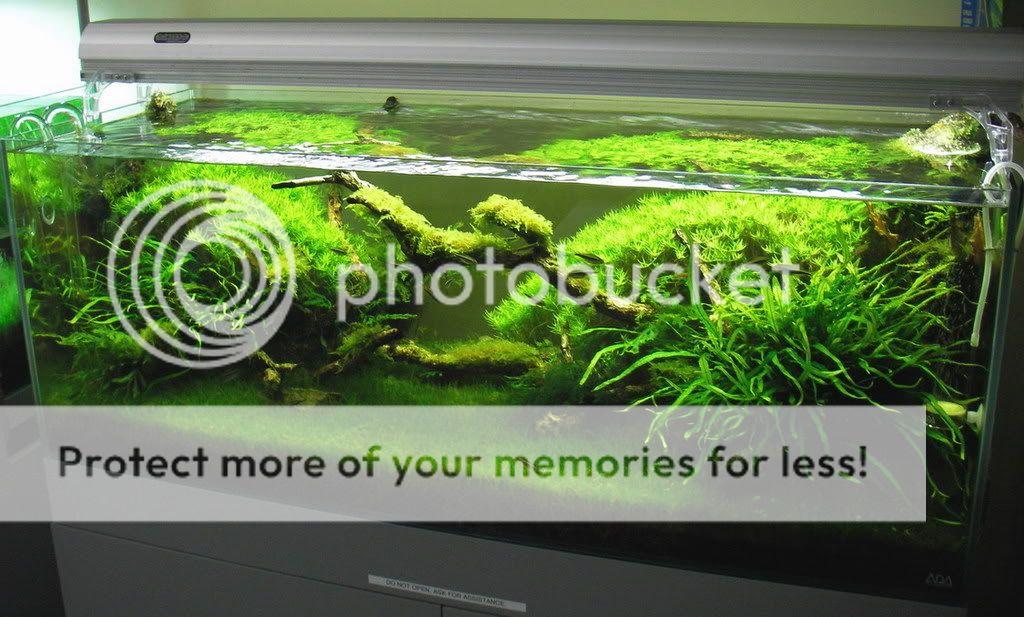You need not not assume that EI requires 50% water change a week, I do once a month of 2 of my tanks, none on the non CO2 tank and weekly on some of my tanks. Depends.
For management of growth rates/work etc, you start where growth starts....sort of obvious ain't it?
I suggest you use less light......why not actually test light while we are at it????
Humm............I'm being a teaser, but it does make a good point, why only test 1/3 and the most minor part of it........with respect to testing what makes aquatic plants grow??? Light CO2 and nutrients. Light drives CO2 demand, which in turns drives all nutrient uptake.
Without the carbon skeletons to incorporate the nutrients, all this stops.
Without the light to power CO2 uptake, this all stops.
Without nutrients to help build the other parts, adding all the light/CO2 does not matter.
So, test the light too!!
It's easy but the meters cost 200-350$ or so, but these can be rented or shared amongst hobbyists, Reefers use them all the time.
Then you have a much better idea of the whole picture.
CO2 is real issue however.
It's the most difficult and transient of all the parameters and central to most of the problems.
I guess folks think they can test what folks have tested for the last 30 years or or more and find new insight. Or you can test things folks have not and put all the pieces together to have a much better understanding.
Still Tropic and myself among others have long said the same things:
http://www.tropica.com/advising/technical-articles/biology-of-aquatic-plants/co2-and-light.aspx
Nutrients are easy and you can modify any method of dosing, they do add all the same things after all.....just at different rates.
Most folks do NOT test consistently and guess, or use the plants as the test kits. I gave up telling them to test a long time ago. When you tell them to test, this also means they have to calibrate the test kits, another step.....that most, maybe 90-95% do NOT do.
So those test data are simply guesses anyway, let alone the light PAR value........and even worse, CO2.
So it opens up a whole can of worms really.
If you are new, is sounds simple when the LFS tells you to test.
Still, EI is just modified PMDD and only uses 50% weekly WC's as an example. It is easy to modify and reduce and I've NEVER once stated otherwise. Other folks have assume this........but I have never said it once.
And I ought to know.
A simple way to reduce the dosing is to start with a non limiting level, then slow and progressively redeuce the dosing down till you hit a negative response from the plants, adjust say 10% less dosing each 2 weeks.
Once you see the negative response, bump back up to the next highest dosing rate.
This is the optimal dosing rate, then you can reduce the % water change since there's less estimated build up. So you can easily reduce the % water changes with a little effort and also.......no testing ppm's, using only the plants as a test kit.
Yes, both require observations and patience, the latter is seriously lacking in aquarist however.
PPS is almost entirely PMDD, darn near plagerism if you ask me, I happen to know both sides of the folks with these methods.
Still, test vs water change, testing the right parameters to begin with that are the root differences(light/CO2), sediment vs water column etc......most of these issues are human, not plant growth issues, folks have the assumptions, they are impatient, they say they want to test but do not......they look to lay blame on the methods, not themselves
The methods do not fail, we do.
Will you learn a lot by testing nutrients?
Not a whole lot without also testing light and CO2 really well and critically also.
Are you after a simple easy method to grow plants without much labor?
Then use non CO2 methods, they are proven and require no water changes(I've gone 2 years without them).
No one method will be all things to every aquarist goal either.
If you want to test, by all means do it...........however, make sure you understand the light and CO2 issues very well before making any conclusions, and also......what constitutes an effective control in any test on plant growth, algae and plant health.
In general, I use light to manage my rates of growth, I use sediment rich source of ferts, and I use the water column dosing as well. I prefer getting the most out my lighting and this minimizes all algae, enhances the growth of the plants without becoming weedy etc. Why waste electric light energy and then limit one of the cheapest things we have? Ferts and water?
Those are far cheaper than light electrical cost. Few alos are willing to spend 300$+ on light meter, or on nicer high grade test kits. I must have 6K$ worth of test equipment and standards, but I'm a bit more into testing than the average aquarist alsoThis does not include the work USDA lab either.......just my personal stash
Hope this helps
Regards
Tom Barr
Again, clear and concise. Long story short, your plants will tell you if you have adequately cared for them.



